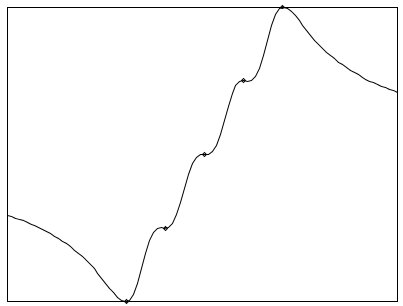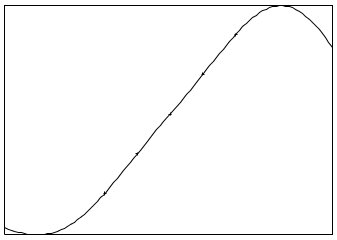
is zero at the data points, and the curve extrapolates to the average of the data values. (source)
 |
| Sheppard interpolation operating
on a set of colinear points. The derivative is zero at the data points, and the curve extrapolates to the average of the data values. (source) |
 |
| Radial basis functions φ(x) =
exp(−x2 /2σ2 ), σ = 10 interpolating the same set of colinear points as in the previous example. A different y scale is used to fit the curve. The curve extrapolates to zero. (source) |